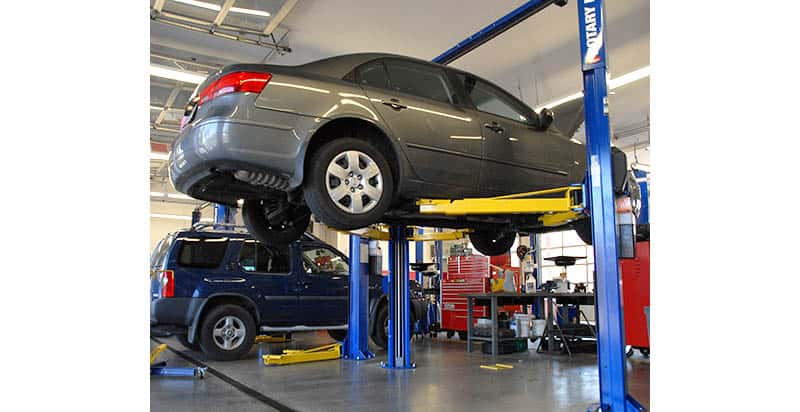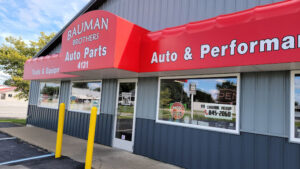“Changes in the age mix of vehicles in operation will have significant consequences for the Do-It-For-Me market through the end of the decade,” states report
Fort Wayne, Ind.—A new report by Lang Marketing estimates that over 16 million fewer vehicles will be sold from 2020 through 2025 compared to the annual sales of the six previous years. This vehicle sales falloff is reducing the number of newer models on U.S. roads and boosting the population of older cars and light trucks.
“These changes in the age mix of vehicles in operation will have significant consequences for the Do-It-For-Me (DIFM) market through the end of the decade,” states Lang.
Here are key takeaways from the analysis.
New and Old Vehicles Take Different Directions
The prolonged downturn in new vehicle sales followingCOVID-19 of 2020 is significantly changing the nation’s VIO age mix.
Lower new vehicle sales will result in many fewer cars and light trucks under 6 years old through the decade. In contrast, low new vehicle volume is causing cars and light trucks to be kept in operation for additional years, increasing the population of older models.
Fewer New Vehicles Impact the DIFM Market
The new vehicle sales decrease between 2020 and 2025 will affect the DIFM market in two ways.
• First, there will be a mileage shift from newer to older vehicles. The billions of miles that would have been traveled by the 16 million vehicles that were not sold will be transferred to older cars and light trucks.
• Second, dealers, deprived of bay work by lower new vehicle volume, will expand their DIFM service bay footprint across older vehicle groups.
Mileage Shift Impact on the DIFM Market
With 16 million fewer vehicles sold from 2020 to 2025, the billions of miles these cars and light trucks would have travelled will be shifted to older vehicles.
Cars three years old and newer are driven an average of over twice the annual miles of the typical car and light truck. The downturn in new vehicle volume means that most of these miles will be shifted to cars and light trucks five to 10 years of age, which average the highest rates of aftermarket product use.
These vehicles also account for a disproportionate share of DIFM volume, so this mileage shift will help to boost Do-It-For-Me repair through the end of this decade.
Dealer Response to Lower New Sales Hits DIFM Market
The drop in new car and light truck volume, which could extend beyond 2025, will deprive dealers of bay work for more recent vehicles (many dealers concentrate on vehicles five years and newer) coupled with a reduction in warranty volume from the drop in warranty-age vehicles.
To compensate for this “lost” bay volume, dealers will market their bays to older cars and light trucks. This will increase DIFM competition among dealers and independent (non-dealer) repair shops and help to boost dealers’ bay sales.
Older Vehicles Reshape DIFM Market
The downturn in new car and light truck volume will moderate scrappage rates and keep older cars and light trucks on the road for more years. This will affect the DIFM market in three ways.
• First, the increasing number of older vehicles and the growing average age of cars and light trucks mean that more use cycles will be added to the aftermarket volume of many products.
• Second, the expanding number of older vehicles will provide a growing vehicle population for dealers to reach as they market their bays to an older mix of cars and light trucks.
• Third, almost all of these older vehicles are internal combustion engine (ICE) models. Their growing number and the greater years that they remain in operation will pump addition volume into the ICE DIFM aftermarket.
Additional Replacement Cycles
The older vehicles remaining in operation longer will create additional use cycles for many aftermarket products, especially as older vehicles are driven more annual miles.
Replacement parts represent the overwhelming majority of the DIFM market, meaning that the additional replacement cycles of many products will boost DIFM volume.
Dealers Expand Service Bay Vehicle Age Range
The growing population of older vehicles will encourage many dealers to expand their bay work to an older mix of cars and light trucks, intensifying competition between dealers and independent (non-dealer) repair outlets.
While dealer work among older vehicles will result in OE parts being used in the repair of an older mix of cars and light trucks, it will also lead to dealers choosing lower-priced independent (non-dealer) brands to cope with the growing price-sensitivity of owners of older cars and light trucks when it comes to auto repair.
Growth for DIFM Repair of ICE Vehicles
Virtually all older vehicles remaining in operation for an extended number of years will be ICE models. Many repairs on these vehicles will involve replacement parts, which often require tools and knowledge beyond the resources of many DIYers. This will result in continued growth of the ICE DIFM aftermarket for many years.
Future Developments
Lang Marketing expects that it will be several years before the new car and light truck market might return to its pre-COVID annual sales levels.
However, this recovery could be delayed indefinitely if supply chain issues continue to hamper OE production and new EV models increase on dealer lots because many consumers continue to prefer ICE cars and light trucks.








Comments are closed.